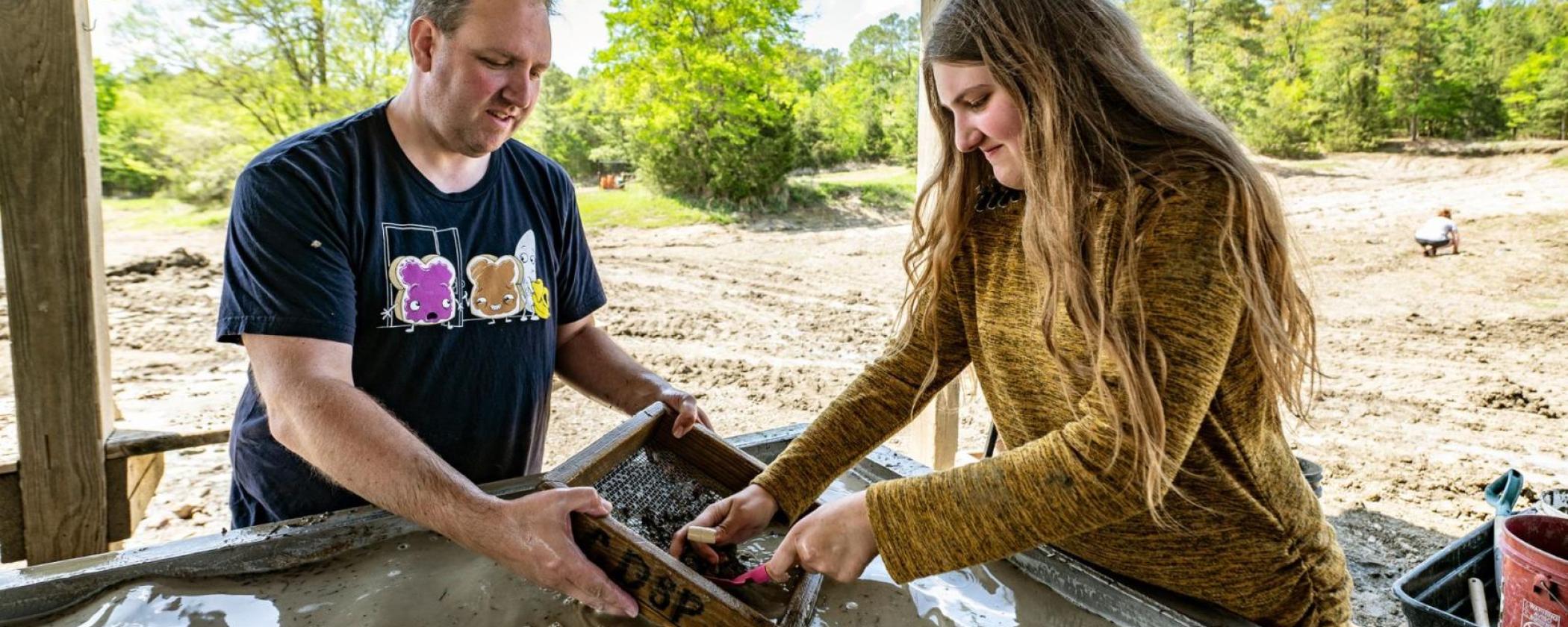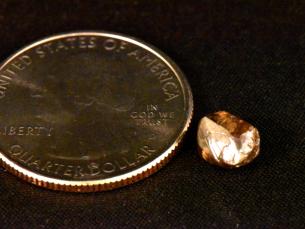
Determining Diamond Color
By: Emma O'NealGreetings from Crater of Diamonds State Park! Visitors often ask us, “What happens if I find a diamond?” The answer is, we identify and register it for you, and you get to keep it! When a visitor finds a diamond, they usually bring it to the park’s Diamond Discovery Center to have it identified. After it is confirmed as a Crater diamond, park staff record basic information about the diamond and issue a registration card in the finder’s name. Part of the registration process involves determining the color of the diamond. Around the world, diamonds come in all colors of the rainbow; diamonds from the Crater are typically white, brown, or yellow.
Impurities or chemical reactions can cause diamonds to appear in different colors. White, or colorless, diamonds are closest to a pure carbon crystal, with few contaminants to create color inside the gems. Brown diamonds from the Crater occur due to plastic deformation, a structural defect that happens during formation or movement to the surface. They reflect red and green color wavelengths, making them appear brown. Yellow diamonds absorb nitrogen into the crystal structure during formation. Nitrogen impurities absorb blue and reflect yellow wavelengths, giving the diamonds a yellow hue.
To determine diamond color, park staff examine a diamond from different angles with the naked eye under bright, white light. The park uses a microscope camera to take closeup photos of diamonds for recordkeeping but never to establish the color of a diamond. A photo of a diamond is unreliable for determining color, as different color settings or inks may not show a diamond’s true color.
Blemishes and inclusions can also reflect through a diamond, creating the appearance of different colors. Blemishes are flaws on a diamond’s surface, such as cavities or chips, caused by pressure or stress. Inclusions are natural flaws or imperfections inside of a diamond. A white diamond may appear to be a different color from certain angles, due to blemishes or inclusions, but colorless from other perspectives. Brown and yellow diamonds may also have flaws, but the crystal will generally be brown or yellow throughout.
Crater of Diamonds State Park exists to responsibly manage and interpret this unique site, to provide a meaningful diamond mining experience for all visitors and future generations. Park staff have developed standard diamond identification and registration practices since 1972, with guidance from the Arkansas Geological Survey and other industry partners. Park guests find one to two diamonds per day, on average. Discover the thrill of the search at
Crater of Diamonds State Park and become part of Arkansas’s long, colorful diamond mining history!
- Search area last plowed: July 25, 2025
- Most recent significant rain: July 14, 2025
- Recent diamond finds (100 points = 1 carat):
- July 17 – Jeff Richardson, Greenwood, AR, 3 pt. white; Michael Turnar, Bethalto, IL, 3 pt. white
- July 18 – Nick Runner, North Olmsted, OH, 1.07 ct. white
- July 19 – Jimmy Maxell, Waldron, AR, 7 pt. white


